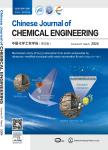Biochar-mediated regulation of greenhouse gas emission and toxicity reduction in bioremediation of organophosphorus pesticide-contaminated soils
Biochar-mediated regulation of greenhouse gas emission and toxicity reduction in bioremediation of organophosphorus pesticide-contaminated soils作者机构:Key Laboratory of Pollution Processes and Environmental Criteria (Ministry of Education) Tianjin Engineering Center of Environmental Diagnosis and Contamination Remediation College of Environmental Science and Engineering Nankai University Department of Building Civil and Environmental Engineering Concordia University
出 版 物:《Chinese Journal of Chemical Engineering》 (中国化学工程学报(英文版))
年 卷 期:2018年第26卷第12期
页 面:2592-2600页
核心收录:
学科分类:0710[理学-生物学] 0830[工学-环境科学与工程(可授工学、理学、农学学位)] 0817[工学-化学工程与技术] 08[工学] 0703[理学-化学]
基 金:Supported by the National Natural Science Foundation of China(41473070,31270544) Engineering Research Center Program of Tianjin(17PTGCCX00240) the National Water Pollution Control and Treatment Science and Technology Major Project(2015ZX07203–011-06)
主 题:Organophosphorus pesticides Biochar NH3NO4 Remediation Greenhouse gas Microbial community
摘 要:Organophosphorus pesticides(OPPs) are a set of toxic persistent organic pollutants(POPs) present in the environment. Recently, biochar-mediated bioremediation has exhibited many advantages over conventional methods for the remediation of pesticide-contaminated soil. In the present study, biochar and nitrogen fertilizer(NH_4NO_3)were employed to remediate OPP-contaminated soil and the greenhouse gas(GHG) emission during 90 days of incubation was investigated. After thermal desorption treatment, the content of organophosphorus pesticides reduced from 175.61 μg·kg^(-1) to 62.68 μg·kg^(-1). The addition of NH_4NO_3 in the following bioremediation led to larger reduction(34.35%) of the pesticide concentration than that of biochar(31.90%) for the contaminated soils with thermal desorption treatment, while the simultaneous addition of biochar and NH_4NO_3 led to the largest reduction of pesticide concentration(11.07%) for the soil without thermal desorption treatment. The addition of biochar and NH_4NO_3 only slightly increased the emission rate of GHGs from the soil without thermal treatment,but remarkably increased the emission rate of GHGs from the soil after thermal treatment. In most cases, the addition of NH_4NO_3 is more effective than biochar to promote the degradation of pesticide, but also exhibited higher GHG emission. The microbial community analysis suggests that the enhanced degradation of pesticide is mainly owing to the increased activity of microorganism.



